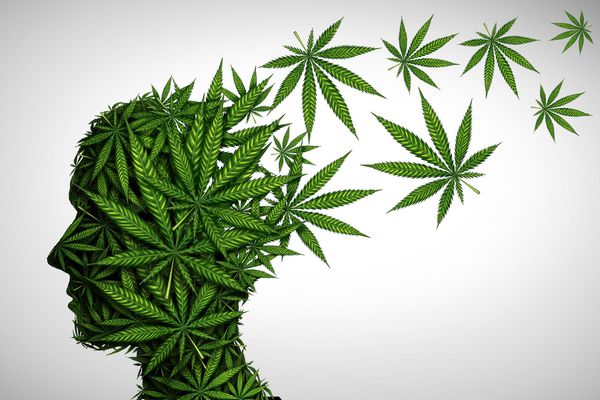Vaping has become wildly popular in the U.S. in the past few years. What started as a minor e-cigarette industry has exploded into a vaping behemoth. This growth industry is of great concern to women, families and overall public health because of the dramatic increase in youth vaping in recent years and new reports of serious lung injuries and several deaths from the practice. Here are the bottom-line facts for women's health:
- Vaping is not healthy.
- Nicotine is an extremely addictive drug and may harm a child's developing brain.
- Vaping may cause serious lung damage and even death.
- Vaping liquids are not all the same. They may contain toxic compounds (other than nicotine).
- Vaping liquids containing THC are oil-based and may be especially damaging to the lungs.
- Many children and youth do not understand that vaping (or "Juuling") contains nicotine and is not just "flavored water."
Those and other facts for this public health epidemic to consider are discussed below:
Origin and Health Effects of Vaping
E-cigarettes were originally touted as a "healthier" alternative for smokers than burning tobacco, which has carcinogenic tar-like compounds. However, e-cigarettes do contain nicotine, which is not only toxic, but highly addictive – perhaps as addictive as heroin and cocaine. And more worrisome is that some forms of nicotine in vaping liquids may be absorbed faster than the nicotine from burning tobacco. This characteristic leads to a higher and more rapid increase of nicotine in the blood stream, which may trigger addiction to nicotine more quickly, and lead to more frequent vaping. In addition, some chemicals in vaping liquids may harm a developing fetus.i
Inhaling either the products of burned tobacco or the heated vapor from e-cigarettes introduces compounds into the lungs that they are not designed to manage. The primary function of the lungs is to exchange gases, i.e., oxygen for carbon dioxide. The lungs also have a role in the immune system and have the capacity to expel inhaled microparticulates. Smoking has been shown to decrease this important ability. Inhaling through the mouth by vaping also bypasses the filtering function of the nose and the complex airway provided by the nasal passages that help keep unwanted things out of the lungs.
New Evidence of Harms from Vaping
As of September 6, 2019, the CDC has reported 450 possible cases of serious lung injury and several deaths associated with vaping. It is highly likely that by the time you read this article those numbers will have increased. The specific causes of those injuries are still being investigated. Two leading theories identify direct toxic damage to the lungs from nicotine, flavorings,ii other chemicals in the vaping liquids, or from oils, resulting in lipid pneumonia.iii This form of pneumonia is a serious health condition that occurs when small droplets of oil in the lungs cause an inflammatory reaction that can lead to fibrosis and permanent scarring and loss of lung function.iv No matter what the specific cause (or causes), the severity of the reaction very likely depends on the type of compound or oil and the length of exposure.
The oil theory for the current outbreak of lung injuries and deaths seems to be gaining traction. What may be happening is that oils that are safe when ingested – and they are often approved by the FDA as food ingredients, additives or dietary supplements – are being used in vaping liquids. The difference is that ingesting a food additive into your stomach is a much different process than inhaling something into your lungs.
Oil is a component of vaping liquids containing THC because THC does not dissolve in water. Several of the severe cases of lung injury recently report have been linked to vaping THC. Another recent report suggests some vaping liquids may contain Vitamin E oil, which is also sold as a nutritional supplement.v Vaping liquids may also contain vegetable glycerin, which may cause lipid pneumonia.vi Adding to the uncertainties about the health dangers is the fact that vaping liquids are available from a variety of sources from original manufacturers, to grey-market companies and local or home-made mixtures.
Youth Vaping Epidemic
While e-cigarettes were initially described as benefiting smokers, they quickly became attractive to non-smokers – particularly children. Last summer, the National Youth Smoking Surveyvii (conducted by the CDC) sent shock waves through the public health community – all the way to the head of the Food and Drug Administration (FDA), which has the authority to regulate tobacco products. The survey revealed that in 2018 21 percent of high school students had used e-cigarettes (up from 1.5 percent in 2011), and five percent of middle schoolers had also used e-cigarettes in 2018 (up from 0.6 percent in 2011). (By comparison, in 2018 only eight percent of high school students smoked cigarettes.) The high and growing rate of use of e-cigarettes is concerning because this was also a reversal of the declining trend of tobacco use in of high school age, and preliminary reports from 2019 indicated that about 27.5 percent of high school students used e-cigarettes.viii
Compounding the worry about this trend is that children and adolescents may be attracted by the various flavors of vaping liquids without understanding the health risk of the nicotine ingredients. Specifically, misconceptions among younger users include:
- Not associating health problems with vaping.
- Believing flavored vaping liquids do not contain nicotine.
- Thinking "juuling" is different than "vaping."
- Not understanding that the products are addictive.
- Not recognizing that "vaping" or "juuling" is prohibited in the public places where smoking is banned. (Some schools are now adding "vaping" to their no-smoking signs.)
Nicotine Harms Children's Developing Brains
Aside from the lung damage noted above, nicotine has serious risks for a child's development. As the U.S. Surgeon General concludes, "adolescents can get addicted more easily than adults. The nicotine in e-cigarettes and other tobacco products can also prime the adolescent brain for addiction to other drugs such as cocaine." And further, "The part of the brain that's responsible for decision making and impulse control is not yet fully developed during adolescence. Young people are more likely to take risks with their health and safety, including use of nicotine and other drugs. Youth and young adults are also uniquely at risk for long-term, long-lasting effects of exposing their developing brains to nicotine. These risks include nicotine addiction, mood disorders, and permanent lowering of impulse control. Nicotine also changes the way synapses are formed, which can harm the parts of the brain that control attention and learning."ix
What the FDA and CDC are Doing
The FDA and the CDC have taken great interest in this situation. Since 2016, the FDA has had the authority to regulate tobacco products, including e-cigarettes. The FDA is working with the CDC to investigate cases of lung damage and deaths, and both are putting out information for the public and the media.x, xi The FDA has also been in contact with the companies that make vaping product (particularly the flavored vaping liquids), with a stern warning about changing their products and marketing, and threatened to ban all vaping products.xii How the FDA proceeds will likely depend on new information from their investigations with the CDC and others, including updated information about youth vaping and the harms that is having on developing minds and bodies.
What You Can Do
- If you are currently vaping (or smoking), talk with your primary care clinician about how best to kick the nicotine addiction to improve your health and well-being.xiii
- Make sure your family members know that vaping is not healthy, and while it may be healthier than smoking cigarettes or a route to stop smoking them, there are many other options to help people stop smoking that don't harm your lungs.
- Hand your kids (or others you know who may be vaping or considering it) a printed copy of this article in exchange for their cell phone and don't give them back their phone until they finish reading this article.
- Check with your local elected officials to make sure that vaping is treated the same as smoking for non-smoking requirements in schools and other places. Suggest that no-smoking signs be changed to include vaping restrictions.
- Urge your federal elected officials to support further investigation by the CDC and the FDA, and to provide them with adequate funding to research the effects of nicotine, vaping and related health issues.
Don't let vaping overturn the progress we've made by reducing teen (and younger) cigarette smoking. If you want to let the Administration know how you feel about this issue, you can contact the President or the Secretary of Health and Human Services.
i https://www.theatlantic.com/health/archive/2017/11/e-cigarette-flavors/546914/
ii https://www.theatlantic.com/health/archive/2017/11/e-cigarette-flavors/546914/
iii https://healthcare.utah.edu/healthfeed/postings/2019/07/
iv This is also why inhaling "cooking sprays" that are used to coat pans is not a good idea for your lung health – and the same is true for the vapors inside microwave popcorn bags, which can cause a condition called "popcorn lung." https://www.webmd.com/lung/popcorn-lung#1
v https://www.washingtonpost.com/health/2019/09/05/contaminant-found-vaping-products-linked-deadly-lung-illnesses-state-federal-labs-show/?wpisrc=al_news__alert-hse--alert-national&wpmk=1
vi https://casereports.bmj.com/content/2018/bcr-2018-224350.full
vii https://www.cdc.gov/vitalsigns/youth-tobacco-use/
viii https://www.cnbc.com/2019/09/12/cdc-says-teen-vaping-surges-to-more-than-1-in-4-high-school-students.html
ix https://e-cigarettes.surgeongeneral.gov/knowtherisks.html
x https://www.fda.gov/consumers/consumer-updates/vaping-illnesses-consumers-can-help-protect-themselves-avoiding-tetrahydrocannabinol-thc-containing
xi https://www.cdc.gov/media/releases/2019/p0906-vaping-related-illness.html
xii https://www.cnn.com/2019/08/08/health/fda-vaping-warning-letters/index.html
xiii https://www.healthywomen.org/smoking and https://www.healthywomen.org/content/article/22-reasons-quit-smoking-today







